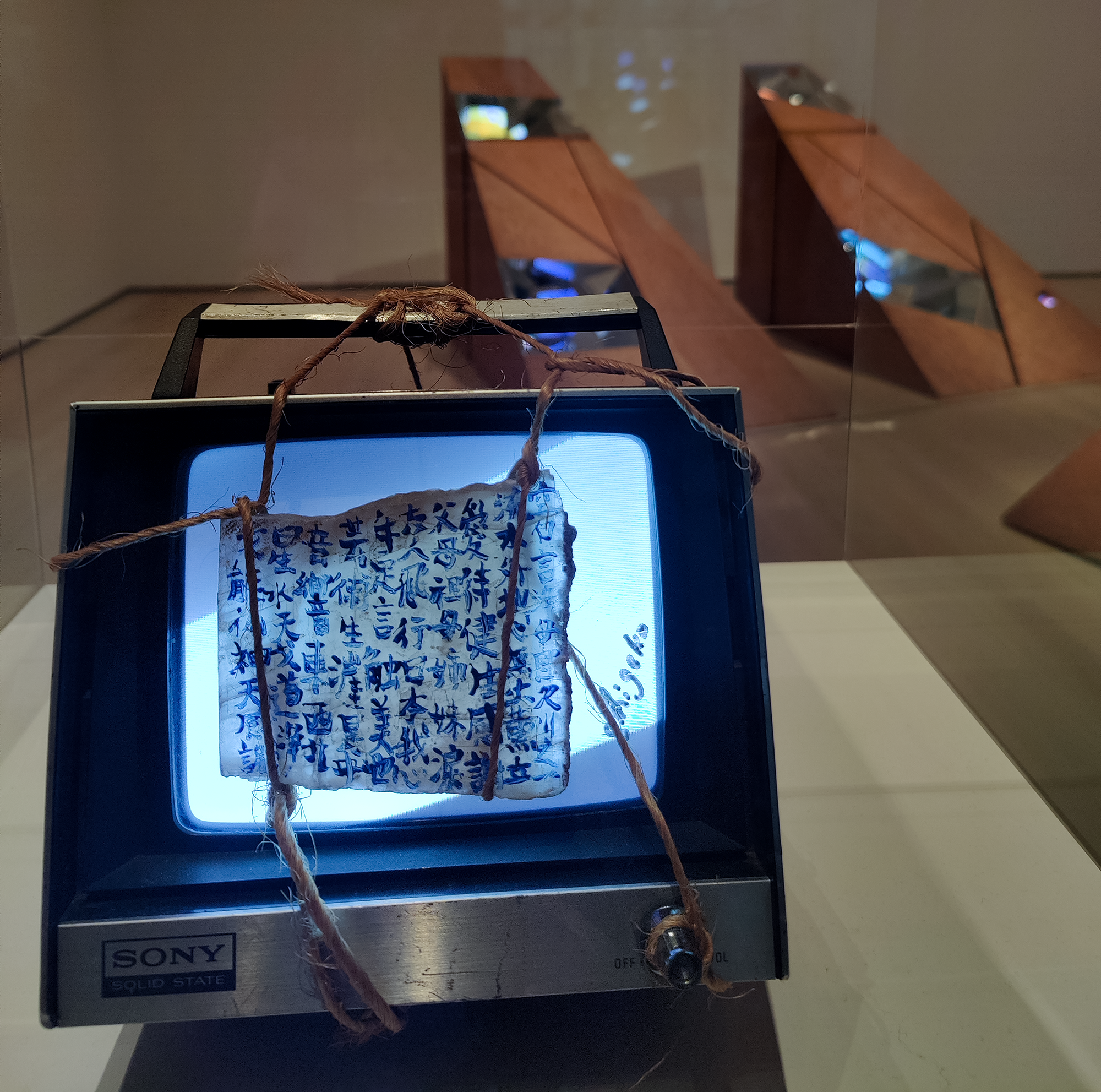When visiting the fourth floor of the MoMA, one may turn right from the elevators to the Andy Warhol exhibition. I recommend doing the opposite and stat with turning left. With going against the flow, I discovered the revolutionary exhibition – Shugako Kubota: Liquid Reality. An exhibition of short videos projected uniquely and creatively for the exact purpose of challenging the viewers to see beyond what is illustrated in front of them. Kubota is a Japanese artist (1937-2015) who is affected by new technology and examined its relationship to time, the body, and everyday life. Using standard definition video and super 8mm footage, Kubota edits and manipulates the video’s electronic signal to create a new and experimental form of video.
In addition to new forms of layering video and editing, Kubota is also examining new forms of screenings. As part of the exhibition, there are two types of screenings. The first part includes clips in wooden boxes. Three wooden boxes are in a pyramidic kind of structure and are covered with mirrors from the inside. The video is played on a small screen on the bottom of the pyramid, that way it is also mirrored on the walls at all different angles. The fourth wooden screening box is in the shape of 4 steps staircase, with a screen on each step. All the screens are showing the same clip in sync. The clip is constructed from footage of a naked woman who walks down the stairs. In addition, Kubota has layered its effects and distractions. This sculpture of the video was inspired by the Cubism painting Nude Descending a staircase (No. 2). The way Kubota used a cubic staircase to screen a nude in a deconstructive way had preserved the cubism ideology while creating a new form of art.
The second part of the Shugako Kubota exhibition has demonstrated the origins of its name: “Liquid Reality”. In another room, there were different kinds of clips, most in a blue to green color palette. The clips are screened either over metal or through water and again create an alienated feeling that makes the spectator think carefully about the viewing. The first piece is a projector screening a clip over a boat-looking metal vessel filled with water. The container included a small swirling tube that created small waives consistently and made the viewing more challenging. In the second piece, the footage is screened on a spherical monitor that swings over a metal curved plate. This sculpture and screening capture both Kubota’s clip and the actual viewer’s reflection. By the third piece, I was most intrigued. It was a wall of mirrors and screens with a water dripping frame, creating the illusion of rain or a waterfall. On the wall, a projector projected one clip, while on the other screens in the wall are projected videos of water-related views. All videos in this piece are in a blue and green color palette, but one video in the lower middle part of the wall, that had a reddish color palette. That clip was a loop of what looked like a trees-top with sunset (or sunrise) in the background.
To sum up, everything that was stated and illustrated in this article, Shugako Kubota: Liquid Reality exhibition, is a brilliant and unique display of old and new footage of the world shown from a new perspective. I recommend taking a look at this showing even if one has already visited the MoMA.
An Article by Noga Harel